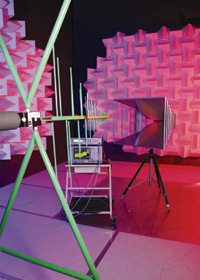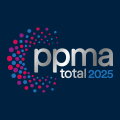
Posted to News on 10th Apr 2010, 00:00
Latest version of CISPR 11 has implications for medical design
Steve Hayes, MD of TRaC EMC & Safety, looks at the evolution of CISPR 11, and highlights the changes in the latest edition.

CISPR 11 has recently been published as a new edition (edition 5.0) and with it brings a number of subtle but significant changes for the products covered by the scope of the standard, namely all industrial, scientific and medical products. It should be noted that CISPR 11 is published in Europe as EN55011:2009 and will become an EMC Directive listed standard in due course replacing EN55011:1997 with its amendments. The aim of EN55011/CISPR 11 is to specify emission requirements for any type of product, system or installation intended for use in either industrial, scientific or medical applications in residential (Class B) or industrial (Class A) environments. In addition supplementary information to specific product-type related (measurement arrangements, modes of operation or load conditions) during the tests or even exemptions from certain measurements may be found also in other IEC product standards. Some of them refer to CISPR 11 in its reference clauses.
The scope of EN55011/CISPR 11 has been extended and changed from a Phenomena-oriented Standard into a Product Family Standard by the inclusion of limits for broadband emissions in Edition 2 of CISPR 11 published in 1990. This can be seen by a historical evaluation of some CISPR publications (CISPR 11; CISPR 14; CISPR 22). CISPR 11 and CISPR 14 were developed in the light of particular phenomena in the early days (1975) of EMC as Phenomena-oriented Standards. CISPR 11 covered narrowband (intentional) and CISPR 14 broadband (unintentional) emission sources. CISPR 11 applied and still applies to all products which intentionally use or generate RF energy, whatever the frequency may be. It is not restricted to the use of frequencies in the so-called ISM bands. Group 1 covers a wide range of products. For example, the former CISPR SC G (now CISPR SC I) was founded as a Working Group of CISPR SC B in the 1970s.
The first edition of CISPR 22 published in 1985 has been developed by CISPR SC B. It was the first CISPR publication which did not draw a distinction between predominantly narrow band and broad band interference sources in one product family standard. Consequently the concept of CISPR 22 was taken over by both CISPR 11 and CISPR 14, although their scopes were only changed marginally. Progressively since then, CISPR 11 has been seen to cover the emission requirements essential for all products (causing broadband and/or narrowband emissions) intended for use in industrial, scientific or medical (ISM) applications.
The scope of CISPR 11 comprises all types of electrical equipment intended for industrial, scientific or medical purposes (property 1) and which is operated in the frequency range 0Hz to 400GHz (property 2). In addition the scope of CISPR 11 also comprises those domestic and similar appliances which are designed to generate and/or use locally radio frequency (RF) energy (property 3). However, property 3 (local generation and/or use of RF energy) may also belong to other types of electrical equipment intended for industrial, scientific or medical purposes, defined as 'ISM RF applications'. ISM RF applications form only a sub-amount of types of equipment in the scope of CISPR 11, for which Group 2 limits apply on a regular basis. For all other (generic) types of equipment in the scope of CISPR 11 the limits of Group 1 apply.
The normative properties of a given type of equipment necessary to be in the scope of CISPR 11 are its intended use for industrial, scientific or medical purposes (property 1), and its operation frequency in the range 0Hz to 400GHz (property 2). And for domestic (and similar) appliances, they are the local generation and/or use of RF energy, which implies an operation frequency in the range 9kHz to 400GHz and the local use of this energy, usually for the "treatment of material" (property 3). The limits for Group 1 and 2 products are now clearly separ-ated and hence section 6.2 covers all Group 1 equipment whilst section 6.3 covers Group 2. One of the most significant changes to the standard is the introduction of power derived limits (as opposed to current). Group 1 equipment limits - that is to say non-radiating products - remain the same. By contrast, Class A products have been sub-divided into a power derived limit based around 20kVA (which corresponds to a nominal 29A per phase in European 400V 3-phase systems). Products with rated power less than 20kVA are considered readily available and have more stringent limits whilst greater than 20kVA (and powered from a dedicated transformer) see new relaxed limits.
The introduction of a new limit shouldn't been seen as a reduction in radio protection from these types of products and systems but more an acceptance that applying a limit intended for smaller machines is very difficult, if not impossible, to achieve in megawatt installations. To ensure that the radio spectrum is protected, the relaxed limits can only be applied where a dedicated transformer is used which will not be connected to the low voltage distribution system connecting domestic dwellings together.
Some the definitions have been refined in the new edition to remove any ambiguities in the scope of products covered. The improved wording ensures that essentially all industrial, scientific and medical products are covered by the scope unless specifically covered by other standards. Where there is an overlap there shouldn't be any conflict of limits since within the standards community these issues are coordinated.
In order to ensure greater repeatability of testing revised test conditions has been defined. These include arc welding and stabilising equipment, various types of medical equipment and induction cooking hobs. The measurement procedure and uncertainty have been, as far as possible, standardised with that contained in the basic standard for test sites and equipment, the CISPR 16 series. There are however practical problems when measuring physically large equipments and hence this is an area that requires further work and will revised in later revisions of the standard.
TRaC, an Element Materials Technology Company
100 Frobisher Business Park
Leigh Sinton Road
WR14 1BX
UNITED KINGDOM
+44 (0)1684 571700








